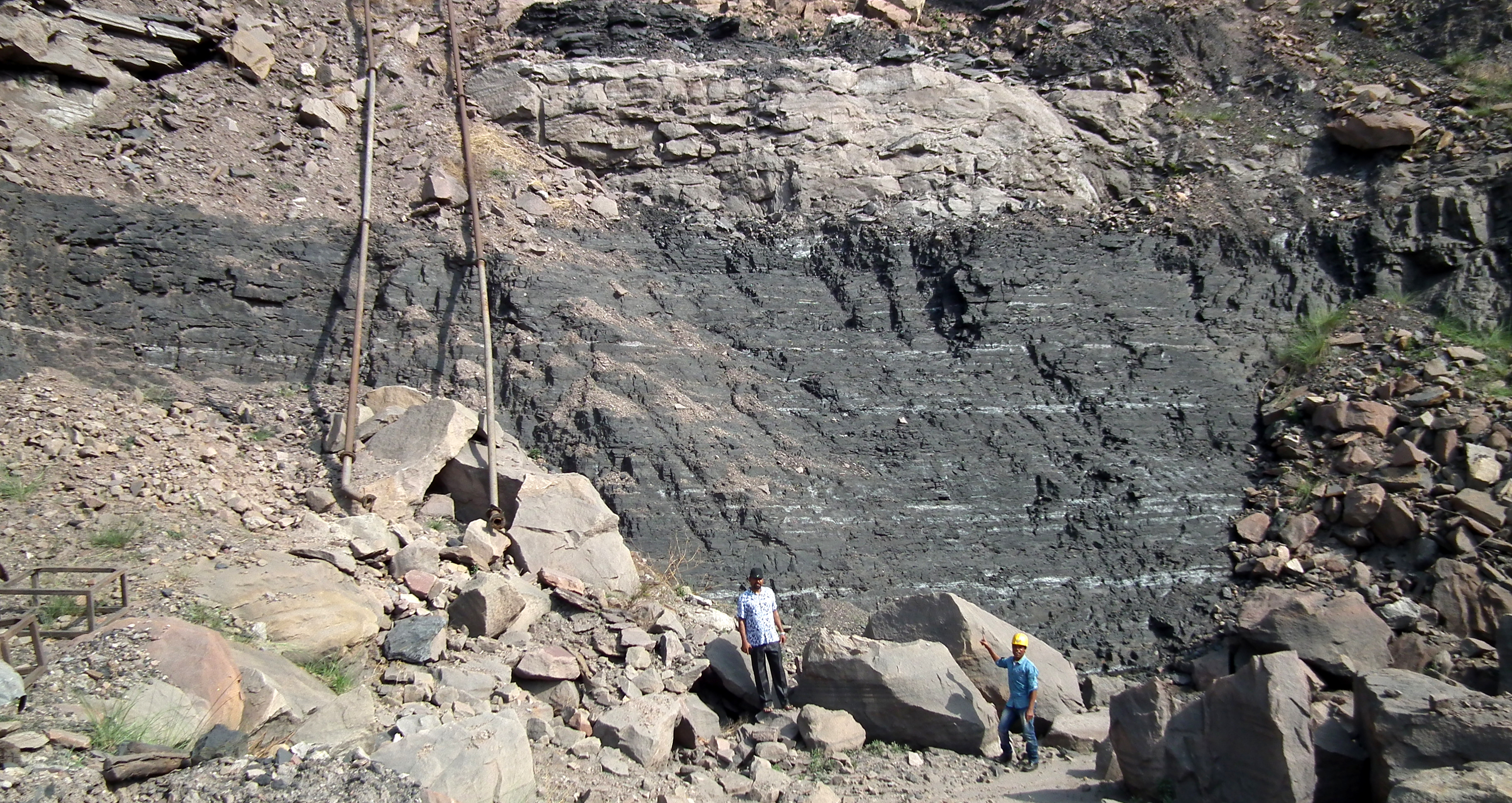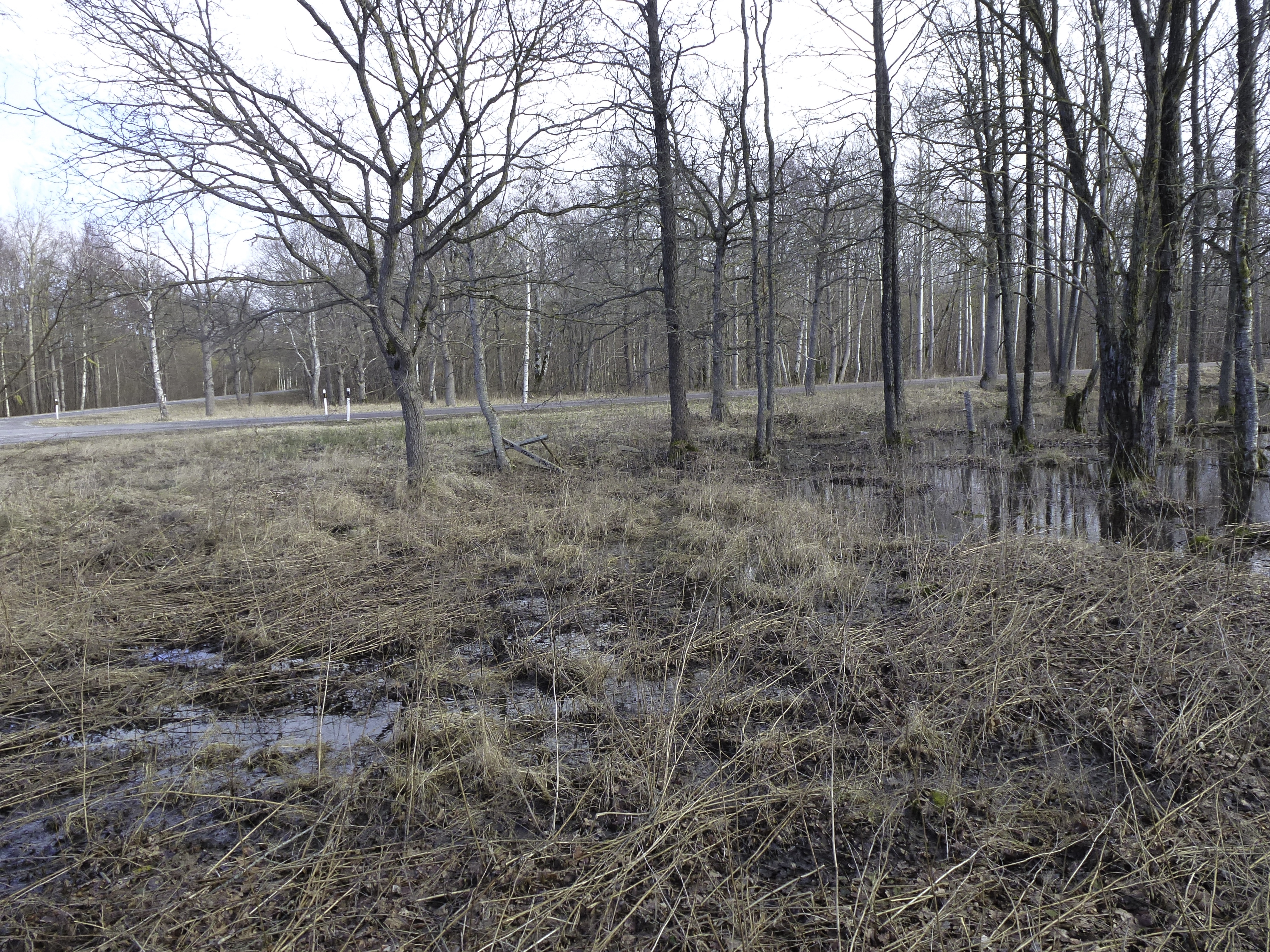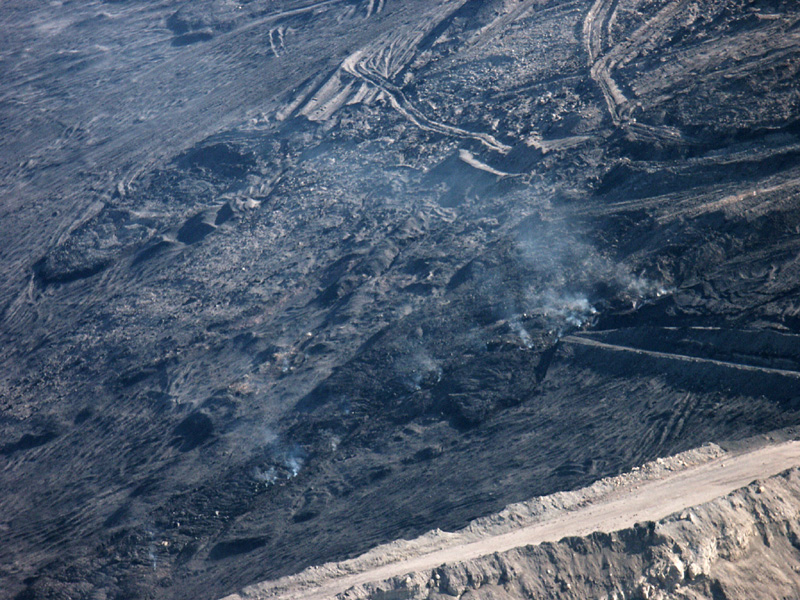©Copyright 2018 GEOSCIENCE RESEARCH INSTITUTE
11060 Campus Street • Loma Linda, California 92350 • 909-558-4548

Ellen G. White made several statements concerning the formation of coal, petroleum, and the cause of volcanoes and earthquakes that are controversial in the light of current scientific understanding of these geological features. The statements appeared over a period of thirty-eight years[1], and are summarized in Patriarchs and Prophets, chapter 8, p. 108-109,
The above statement contains seven assertions that have some scientific implications: (1) the Flood buried immense amounts of plant material; (2) buried plant material changed to coal; (3) buried forests yielded oil; (4) subsurface coal and oil frequently ignite; (5) heat from subsurface fires burns limestone and melts iron ore; (6) interaction of hot rocks and water produces earthquakes, volcanoes and other geologic events; (7) such events will increase near the end of time. Here we briefly examine these claims in the light of the current scientific understanding.

E. G. White states that forests (wood, plant material) were buried during the Flood and that coal and oil resulted from them. Geologists recognize two basic types of coal: humic coals, derived mainly from macroscopic plant parts, and sapropelic coals, derived from microscopic plant parts. The vast majority of coals are humic, most of which are thought to have derived from peat altered physically and chemically under slow bacterial degradation.[2] This model of coal formation needs critical evaluation.
Peat consists of accumulated plant material that contains fresh plant parts, bark, seeds, leaves, and mostly decayed plants, sometimes including entire trees, that gradually accumulates in a swamp. Compression, compaction, and heat are believed to transform peat into lignite and then into coal, a process called coalification. Coal also contains various amounts of minerals, mainly quartz, carbonate and clay minerals. These peats may form in fluvial environments (oxbow lakes, abandoned meanders), deltas, mangrove swamps in coastal plains, and shallow lakes. The peat model, however, presents several difficulties.
First, it is estimated that as much as 99% of the original plant material accumulated in swamps and other peat-forming environments may have disappeared during peat formation.[3] In addition, rates of accumulation of peat material are extremely low in modern environments. For example, a core from the Okefenokee Swamp in Georgia, United States, shows an inferred rate of accumulation of 0.31-1.64 mm/yr,[4] which is an extremely low rate of accumulation to account for the massive coal deposits that occur in many places around the planet. The formation of large, thick masses of coal that occur in the sedimentary record would have required an extremely long time or higher rates of accumulation of plant material than those inferred by the sedimentary characteristics of the strata.

Saaremaa Island, Estonia: This photo illustrates an environment similar to those invoked in uniformitarianist models, where slow accumulation of tree and plant material in a wet setting with low rates of decay would produce peat, and coal with increased pressure and temperature. Environments like these in modern times do not capture the large extension in both thickness and surface area of coal beds in the rock record.
Second, despite the abundant occurrence of modern peat-forming environments, geologists do not know of any place where coal is being formed from peat accumulation. Peat environments are abundant in modern continents but organic deposits in them are not thick enough to facilitate coal formation.[5] In order for coal to form, peat must be buried and be exposed to high temperatures. Within a uniformitarian framework (long ages, slow processes) for the interpretation of the history of the rocks, including coal, we should be able to find places with peat at various depths and degrees of coalification, but that is not the case. The idea of peat turning into coal is an inference, not an observation. Ellen White’s statement that coal formed as a result of massive burial of forest during the global Noachian Flood is a plausible idea. [6]
Geologists do not believe that oil formed as a result of buried forests. Oil is thought to form by the accumulation of large amounts of organic material from plankton buried in the sediments under anoxic conditions. [7] However, boreholes drilled into the Wealden Formation in the German Lower Saxony Basin show an interesting co-occurrence of coal and oil and gas. No oil or gas have been found in the most coalified deposits of the formation, but many productive oil wells have been found at the margin of the basin, where lower-ranked coal (with less carbon content) occur, which suggests that there might be a relation between the formation of coal and the formation of oil, at least in that region. Oil in the Cooper, Bowen and Surat basins, Australia, has, at least in part, a non-marine, terrestrial origin with a source in buried and macerated land plants.[8] Therefore, strictly speaking, E. G. White was not mistaken when her statement on oil originating from coal deposits is compared with the modern understanding of the origin of oil in the past. Some oil, at least locally, may have been formed by the accumulation of terrestrial plant material, which is the current interpretation for the formation of coal.
Ellen White’s assertion that oil derived from buried forests (which turned into coal as well) may have been influenced at that time by the use of the term coal oil, which is still used today to refer to a specific shale oil obtained from distillation of cannel coal or bituminous shale. This term was in use by the late 18th century.[9] In the early 19th century it was discovered that oil could be distilled from the bituminous shale and used as lamp fuel.[10] In the second half of the 19th century, by the time Ellen White was writing her books, coal oil (named kerosene) from bituminous shale replaced whale oil as an indoor illuminant. Eventually, the production of oil from coal ceased when abundant petroleum was found in Pennsylvania in 1859. Therefore, the idea of oil being the result of buried forests may have an explanation in the fact that people were using the term coal oil to refer to kerosene derived from oil shale.
White asserts that subsurface coal and oil frequently ignite, and heat from subsurface fires burns limestone and melts iron ore. The fourth statement we are examining concerns the burning of coal and oil underground. The idea goes back to at least Aristotle and Lucretius, but the first scientist known to link these fires with coal was Nicholaus Steno in the 17th century, although he claimed that both bitumen and coal were byproducts of subterranean fires.[11] In the 18th century, the idea that subterranean fires can be the result of burning coal was demonstrated by the most influential geologist at that time, Abraham Werner, who, visiting Bohemia in 1777, found subterranean fires in coals beds.[12] Since then, science has shown that under certain physicochemical conditions, coal may ignite and burn spontaneously, a process that may last for decades or indefinitely. There are numerous examples from around the world, including places in the United States, Spain, China, India, New Zealand, Russia and South Africa, and it has been the subject of many scientific articles.[13] I have seen that in several outcrops of an open coal mine in As Pontes, Galicia, northwest Spain.[14] EG White’s assertion that coal was formed by the accumulation of plant material and that it sometimes burns underground conforms to the current understanding in science.

Spontaneous combustion of coal occurs in several places around the world, including in open pit mines, like this one in Kemmerer, Wyoming, USA. Photo taken by Dr. Raúl Esperante 6 July 2004.
White asserts that oil also may burn underground. Though this has not yet been proven by science, recent evidence points out to that possibility. In September 2012, an explosion was heard at the Yukon-Charley Rivers National Preserve in Alaska, followed by a fire in a caldera of unknown origin. Burning and emission of gases continued through the year 2013. Experts determined that the likeliest cause was an oil shale deposit under the mountain that had somehow ignited and was now burning steadily, but detailed research has not been done to this date.[15]
White asserted that heat from subsurface fires (from burning coal) burns limestone and melts iron ore. Science has shown this idea to be a fact. Otto Stutzer, a geologist at the School of Mines at Freiburg, Germany, provided evidence of this in the first half of the 20th century in his book Geology of Coal, where he writes that subsurface fires in Bohemia result in the melting of nearby rocks that are classed as pseudo-volcanic deposits.[16] Stuzter explains that rocks that overlie the burning coal have been altered because of the heat, being sintered and melted. It is interesting to note that geologists have found that limestone is commonly associated with coal. Limestone usually occurs in cyclothem sequences of coal, shale, limestone and sandstone. The idea that heat from burning coal causes melting of iron ore is a possibility if a deposit of iron ore happens to be in contact or near burning coal.
White also suggested that conditions of burning coal can cause volcanic activity and earthquakes. Again, this was the common explanation in the 18th and early 19th century.[17] Today, plate tectonics is the accepted explanation for both volcanic activity and earthquakes. A discrepancy arises here between her statements and the statements by science. Several suggestions have been made to solve this discrepancy.
One suggestion is that White used her contemporary’s explanation for volcanoes to make a valid point. That explanation is outdated, but the fact that God uses the elements of nature to accomplish his plans is still valid. The earth sciences were little developed in the 19th and early 20th centuries, and what she wrote reflects the knowledge of her time. With that explanation, though partially inaccurate, common natural phenomena (earthquakes, volcanic activity) were explained by the action of other natural phenomena, without entering in the scientific details of the actual causes. The theory of plate tectonics had not been developed. Perhaps, God could have chosen to reveal to her something that would more accurately explain those catastrophic natural phenomena, but it would not have been understood by the readers for many decades. It’s plausible that God chose not to reveal such information because nobody would have understood the model of the moving fragmented crust of the earth.
Another suggestion is that burning coal caused some volcanism during the Flood in a limited way. As pointed out above, we do find underground coal seam fires today, but they don’t seem to cause volcanism. Whether burning coal was the cause of volcanism during the Flood is a possibility but may not be possible to investigate. In another statement (Manuscript 62, 1886), White states that there were volcanoes during the Flood, which suggests that she did not think that all volcanoes originated from burning coal, since coal, according to her, came from forests buried during the Flood. Also, White does not state that all earthquakes are caused by subterranean fires.
A third possibility is that God supernaturally used a different method for causing volcanoes during or even after the Flood, so naturalistic research is not useful in trying to understand it. In Spiritual Gifts volume 3 page 79 White claims that, "God causes large quantities of coal and oil to ignite and burn." God has at his disposal all nature and he can cause volcanoes to erupt and earthquakes to shake, and may choose to do so at any point to achieve his purposes.
In conclusion, in the light of current scientific knowledge, White’s seven assertions in her statement in Patriarchs and Prophets may be evaluated as follows: (1) The Flood buried immense amounts of plant material: most creationist scientists would affirm this claim and there is good evidence for that, whereas uniformitarian geologists would claim that coal originated from slow, steady accumulation of plant material in peat environments. (2) Buried plant material changed to coal: this is undisputed by science and most scientists agree because analysis of coal indicates that it is the result of physical and chemical transformation of massive amounts of plant material. (3) Buried forests yielded oil: this assertion is controversial since evidence shows that oil comes from burial of plankton and other organic material buried in the sea. However, recent research has shown that coal may yield oil in some areas, thus confirming, at least partially, her statement. (4) Subsurface coal and oil frequently ignite: the case of subsurface burning coal is an undisputed fact observed by conventional scientists. Ignited coal is a phenomenon observed in nature. Recent observations suggest that oil in natural host rock may spontaneously ignite and burn for some time. (5) Heat from subsurface fires burns limestone and melts iron ore. This has been established in at least one case in Bohemia, where limestone and shale had been altered by the heat of associated burning coal. (6) Interaction of hot rocks and water produces earthquakes, volcanoes and other geologic events: This statement is possibly the most controversial because of lack of strong scientific evidence for the claim, however, it is controversial only if the burning coal is seen as the cause for this interaction. Several suggestions have been made to explain White’s assertion; including the idea that she was influenced by the common understanding of the day by at least some naturalists, and the idea that she may have referred to volcanism in the Flood. The claim that the action of rocks and water produces earthquakes and other geologic events is the only statement that seems in need of an explanation, such as based on contemporary thinking, or based on only a few local examples, etc. (7) Such events (volcanism, earthquakes) will increase near the end of time. This is a prophecy for the future and therefore impossible to test by science. Whether catastrophic events will increase in the future before the second coming of Christ and the end of this world is a prediction beyond what science is capable of confirming. Since we don't know when the end will happen, this claim may be impossible to verify until the end happens and we look back on this issue.
Raul Esperante, PhD
Geoscience Research Institute
[1] Spiritual Gifts, vol. 3, pp. 79-80 (1864); see also The Spirit of Prophecy, vol. 1, pp. 82, 83 (1870); Signs of the Times, Mar. 13, 1879; Patriarchs and Prophets, pp. 108, 109 (1890); Manuscript 21, 1902, cited in Seventh-day Adventist Bible Commentary, vol. 7, pp. 946, 947.
[2] McCabe PJ. 2009. Depositional Environments of Coal and Coal‐Bearing Strata. Sedimentology of Coal and Coal-Bearing Sequences: 11-42
[3] Clymo R. 1987. Rainwater-fed peat as a precursor of coal. Geological Society, London, Special Publications 32: 17-23.
[4] McCabe, p. 18. Rates from other places range between 0.1 and 2.3 mm/yr (see p. 25).
[5] Pravettoni, Riccardo. 2009. The natural fix? The role of ecosystems in climate mitigation. http://www.grida.no/resources/7571.
[6] Robinson, Steven J. 1996. Can Flood geology explain the fossil record? Creation Ex-Nihilo Technical Journal 10(1):32-69. Snelling, A. A. 2014. How did we get all this coal? Answers Magazine https://answersingenesis.org/biology/plants/how-did-we-get-all-this-coal/, accessed 16 January 2020.
[7] Teichmüller M, Teichmüller R. 1968. Cainozoic and Mesozoic coal deposits of Germany. Coal and Coal-Bearing Strata: 347-79
[8] Hobday D. 1987. Gondwana coal basins of Australia and South Africa: tectonic setting, depositional systems and resources. Geological Society, London, Special Publications 32: 219-33
[9] Account of the qualities and uses of coal tar and coal varnish. The Scots Magazine, vol. 46, May 1784, p. 240-242.
[10] Accum, Frederick. 1820. Description of the process of manufacturing coal gas. 2nd ed. Thomas Boys, London, p. 301.
[11] Geikie A. 1905. The Founders of Geology. New York: Macmillan and Co., p. 56.
[12] Ibid., p. 222.
[13] Recently two main volumes have been published: Stracher GB. 2007. Geology of coal fires: Case studies from around the world. Geological Society of America 18; and Coal Fires Burning around the World: a Global Catastrophe. 2014. International Journal of Coal Geology, Volume 59(2014), Issues 1–2, Pages 1-152.
[14] Extraction of coal from the As Pontes mine was terminated in December 2007, and the open pit is now a small lake.
[15] Reported by Ben Anderson in the Alaska Dispatch, August 18, 2013.
[16] Stutzer, Otto. 1940. Geology of Coal, translated by Adolph Noé. Chicago: University of Chicago Press, pp. 309-310.
[17] Geikie, op. cit., p. 225.